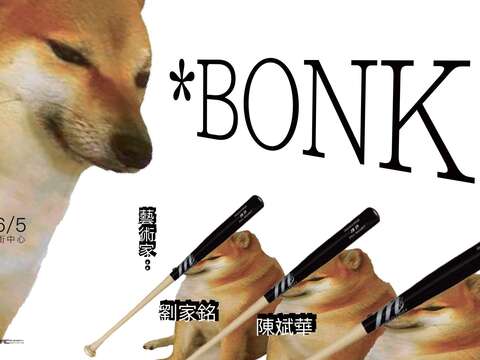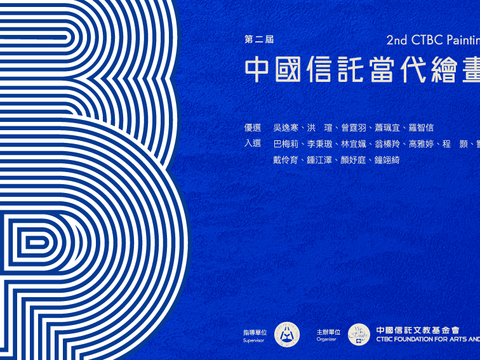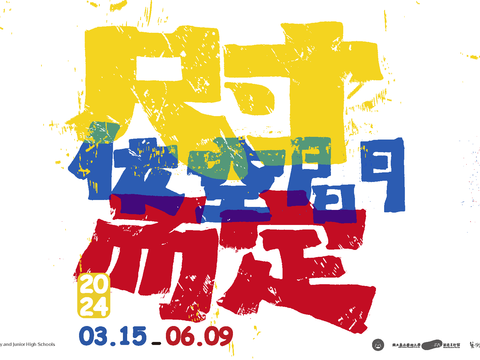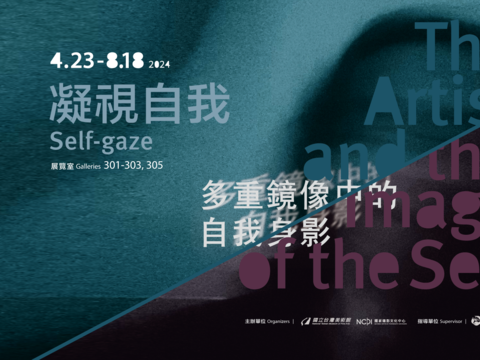Post date:2022-05-12
Updates:2022-05-12
3693
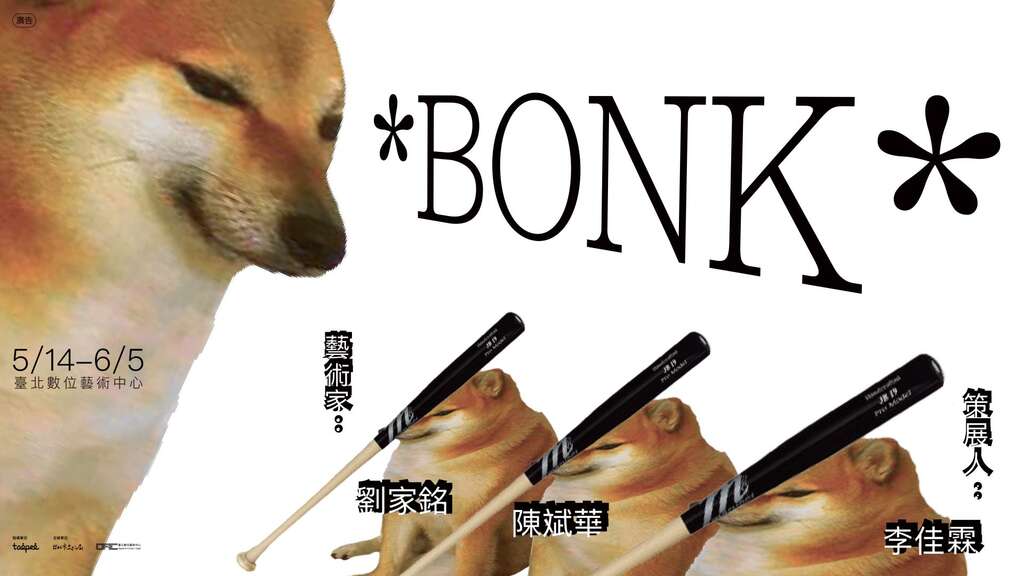
- Event Time
- 2022-05-14~2022-06-05Tue.-Sun. 11:00-19:00
- Event Location
- No. 180, Fuhua Rd., Shilin Dist., Taipei City Taiwan, R.O.C
*BONK* refers to the sound of hitting something with a baseball bat, deriving from a Doge meme in which a big shiba inu is hitting a small one and ordering it “BONK! Go to ______ jail!”______ The blank could be filled in with any word you like.
In order to discuss how the technologies of reproduction and encryption transform our imagination of cultural production, Liu Chia-Ming and Chen Pin-Hua are invited to develop five new pieces for this exhibition, focusing on the topics of meme, metadata and hash algorithm. *BONK* aims to create a humorous context like the Doge meme. The audiences are welcome to bonk their heads with the ideas behind the works. Through understanding the mechanisms, one could avoid being confused by the buzzwords.
Liu Chia-Ming, who is a cybersecurity engineer, sees memes as an encoding system. Encoding, for example by encrypting and compression, makes data being transmitted better and faster. Memes possess a tendency of self-replication since they are able to compress contexts. There is no need to defend the influence of memes, though they are not aiming at high resolution or quality and usually being spread in the form of “poor image” named by Hito Steyerl. Memes themselves function in the background. The artist builds a database of context with meme templates. New memes are constantly created by a program which fills new contents into the templates automatically.
American conceptual artist Joseph Kosuth used to question the meaning of “nothing” with dictionary definitions in six different languages. He claimed that “nothing” became “something” when one had to describe it with words. Same paradox appears in the digital world. Chen Ping-Hua’s Null looks for a way to describe “null” on blockchains. Different encoding systems and hash algorithms produce different versions of “null”, then which is the real “null”? Perhaps it is not even a problem to the operation of the digital world.
The two artists collaborate on The Original Copy and Binding. Chen has published his photographic works with “CC0 public domain” license, reserving no rights to his own photographs; in 2021, he created an NFT work entitled NF0, based on his previous CC0 practices. While institutions dedicated to preserving digital archives keep writing the metadata of their archives and entries, Chen erases all the metadata of his works when releasing them, in pursuance of the possibility to create more connections among the works and other entries. Each time we create a new document in software, we always get a blank one. Technically, every digital image comes from a blank, and every image can also be transformed into another one or back to a blank. What is presented in The Original Copy is the freedom to connect among digital images.
Binding extends the meaning of the blank in The Original Copy. It further describes the specific condition that a physical object interlink with an NFT. We invite the audience to bring over their own objects, wrap or band the objects on site and leave their wallet address. The whole process is linked to NFTs created by the artists for this exhibition.
Finally, The Cave by Chen Pin-Hua shows a reflection on the infrastructure of blockchains. Quoting from Plato’s “Allegory of the Cave”, the artist compares blockchains as the cave, and hash algorithm, the shadows projected on the walls. The basement of The Digital Arts Center, Taipei is built into a cave where computers installed there are executing encryption. The audience can not enter the cave but glance through a window on the floor.
In order to discuss how the technologies of reproduction and encryption transform our imagination of cultural production, Liu Chia-Ming and Chen Pin-Hua are invited to develop five new pieces for this exhibition, focusing on the topics of meme, metadata and hash algorithm. *BONK* aims to create a humorous context like the Doge meme. The audiences are welcome to bonk their heads with the ideas behind the works. Through understanding the mechanisms, one could avoid being confused by the buzzwords.
Liu Chia-Ming, who is a cybersecurity engineer, sees memes as an encoding system. Encoding, for example by encrypting and compression, makes data being transmitted better and faster. Memes possess a tendency of self-replication since they are able to compress contexts. There is no need to defend the influence of memes, though they are not aiming at high resolution or quality and usually being spread in the form of “poor image” named by Hito Steyerl. Memes themselves function in the background. The artist builds a database of context with meme templates. New memes are constantly created by a program which fills new contents into the templates automatically.
American conceptual artist Joseph Kosuth used to question the meaning of “nothing” with dictionary definitions in six different languages. He claimed that “nothing” became “something” when one had to describe it with words. Same paradox appears in the digital world. Chen Ping-Hua’s Null looks for a way to describe “null” on blockchains. Different encoding systems and hash algorithms produce different versions of “null”, then which is the real “null”? Perhaps it is not even a problem to the operation of the digital world.
The two artists collaborate on The Original Copy and Binding. Chen has published his photographic works with “CC0 public domain” license, reserving no rights to his own photographs; in 2021, he created an NFT work entitled NF0, based on his previous CC0 practices. While institutions dedicated to preserving digital archives keep writing the metadata of their archives and entries, Chen erases all the metadata of his works when releasing them, in pursuance of the possibility to create more connections among the works and other entries. Each time we create a new document in software, we always get a blank one. Technically, every digital image comes from a blank, and every image can also be transformed into another one or back to a blank. What is presented in The Original Copy is the freedom to connect among digital images.
Binding extends the meaning of the blank in The Original Copy. It further describes the specific condition that a physical object interlink with an NFT. We invite the audience to bring over their own objects, wrap or band the objects on site and leave their wallet address. The whole process is linked to NFTs created by the artists for this exhibition.
Finally, The Cave by Chen Pin-Hua shows a reflection on the infrastructure of blockchains. Quoting from Plato’s “Allegory of the Cave”, the artist compares blockchains as the cave, and hash algorithm, the shadows projected on the walls. The basement of The Digital Arts Center, Taipei is built into a cave where computers installed there are executing encryption. The audience can not enter the cave but glance through a window on the floor.
 BONK
BONK